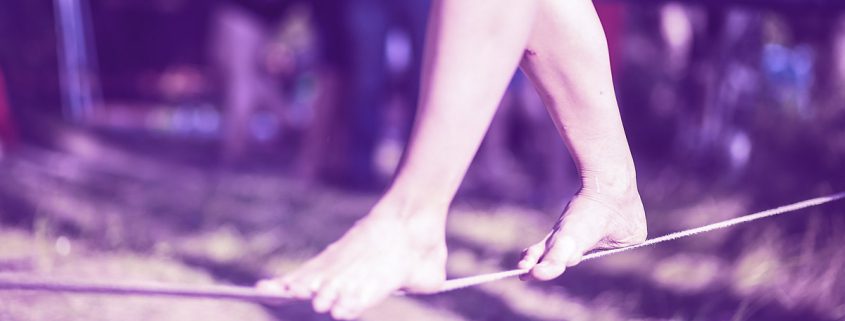Take the Balance Challenge to Help You Live Longer
Keeping your body in balance is essential for overall health and wellbeing. But as we age, it can be difficult to maintain this balance due to weakened muscles, joint stiffness, and decreased mobility. The good news is that there are many simple exercises you can do to stay balanced and healthy! Taking the balance challenge is a great way to get started.
Balance exercises focus on core strength, coordination, and flexibility. They also improve proprioception – our sense of self-awareness in space – which helps us respond quickly when our body moves suddenly or off-balance. This kind of training increases your stability and reduces the risk of falls and injury.
By regularly doing balance exercises like standing on one leg, squats, and toe taps you’ll be able to live longer by keeping your body fit and agile. So why not take the balance challenge today? Start with some easy exercises that gradually become more challenging as you progress – it won’t take long to start feeling the benefits!
Balance
One of the primary benefits of standing on one leg is that it can help to improve your balance. Balance is the ability to maintain your body in a stable position, and it is important for activities such as walking, running, and climbing. By standing on one leg, you are forced to engage the muscles in your leg and core that are responsible for maintaining balance. Over time, this can lead to improved balance and coordination.
Coordination
Another benefit of standing on one leg is that it can help to improve your coordination. Coordination is the ability to move your body in a smooth and controlled manner. When you stand on one leg, you must coordinate the muscles in your leg and core in order to maintain your balance. This can lead to improved coordination and muscle control.
Strength
Standing on one leg can also help to build strength in the muscles of your leg and core. The muscles in your leg and core must work harder when you are standing on one leg than when you are standing on two legs. Over time, this can lead to increased muscle strength. Additionally, standing on one leg can also help to improve bone density, which can reduce the risk of fractures.
Proprioception
Proprioception is the ability to sense the position of your body in space. This includes knowing where your limbs are without having to look at them. Standing on one leg can help to improve proprioception by forcing you to engage the muscles that are responsible for this sense. Improved proprioception can lead to improved balance and coordination.
Longevity
Standing on one leg may also help you live longer! A study published in the journal PLOS ONE found that older adults who stood on one leg for more than 10 seconds had a lower risk of death over a 6-year period than those who did not stand on one leg. The study authors believe that standing on one leg may help to improve balance and coordination, which could lead to a reduced risk of falls and fractures
Take the balance challenge to help you live longer
* By Michael Mosley Published: 01st March, 2022 at 16:00
* Exert from TV’s Dr Michael Mosley
A good test of your balance is to see how long you can stand on one leg, first with your eyes open and then closed. Take your shoes off, put your hands on your hips and stand on one leg. See how long you last. The test is over as soon as you shift your planted foot or put your raised foot down on the ground. Best of three. Then repeat, with your eyes closed. You will be dismayed by how quickly you start to fall over. Here are the targets that different age groups should be able to manage:
* Under 40: 45 seconds with eyes open, 15 seconds with eyes closed.
* Aged 40-49: 42 seconds open, 13 seconds closed.
* Aged 50-59: 41 seconds open, 8 seconds closed.
* Aged 60-69: 32 seconds open, 4 seconds closed.
* Aged 70-79: 22 seconds open, 3 seconds closed.
Why is this balance test so important? It’s because it is so taxing. Your brain normally uses three different types of information to keep you upright: your eyes, your vestibular system (a sort of spirit level you have in your inner ear), and proprioceptors in your limbs that send signals to your brain, telling it what is going on. When you remove your eyesight, the brain has to work much harder to keep you steady.
https://www.sciencefocus.com/the-human-body/dr-michael-mosley-standing-on-one-leg/

